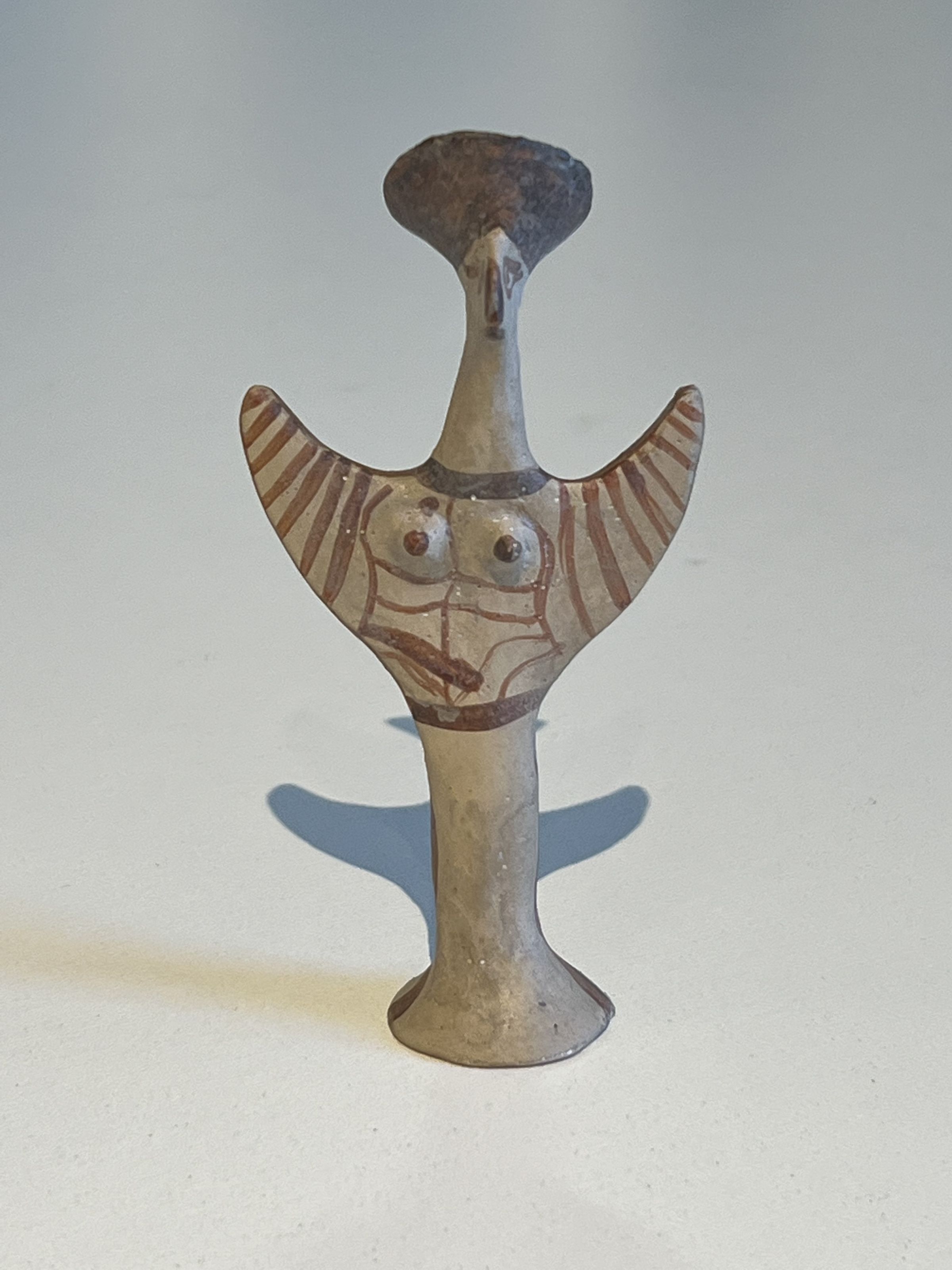Mycenaean Psi Figurine
Name/Title
Mycenaean Psi FigurineEntry/Object ID
22G04260Description
Standing female figure with abbreviated raised arms. The figure wears a garment covering the arms and torso. The figure also has a pointed face and a large headdress. Resin copy of terracotta original.Type of Sculpture
StatuetteArtwork Details
Medium
TerracottaSubject
Psi figurineContext
These early terracotta figurines originate from the area surrounding ancient Mycenae, Greece. The three most common forms of these figurines are named for their resemblance to the Greek letters Phi, Psi, and Tau. It is generally agreed that all the types represent female figures due to the presence of protruding breasts. There is no archaeological evidence for figurines on the Greek Mainland before the end of the 15th century BCE, which has led experts to suggest that inspiration for these figurines may have come from contact with the Minoan civilization. Examples of these figurines have been found throughout much of the Greek mainland as well as many Greek Islands, and have frequently been found in the context of shrines, graves, and houses. The exact function of the figurines is not known, and over the decades scholars have argued that the archaeological contexts could suggest use of the figurines as toys, votive offerings or grave offerings, and popular or state-sponsored cult practices. The emphasis on the breasts, and the rare occasions that they carry a child, have led scholars to believe that there is a connection to fertility or a fertility goddess cult. Parallel vertical lines on the upraised arms of this figurine and others like it are believed to indicate the folds of a loose-fitting garment. However, unlike many Psi figurines on which the lines are painted over the whole torso, the lines on this figure stop at the outside of each moulded breast where two wavy lines appear to indicate the curvature of the torso. The shaped breasts are emphasized with dots. Below the breasts are two horizontal lines, and below these are two lines which curve down to the centre of the figure’s waist. Both the waist, and the neck-line of the garment are indicated by thick painted bands. The scholarship on Mycenaean figurines argues that such imagery was not intended to sexualize the female form. This figure therefore, may be depicting a more form-fitted garment beneath the flowing top that is typical of Psi, Phi, and Tau figurines. The base of the figure flares out which may suggest a long robe is being depicted. The figure wears a large headdress, which is painted with a red-brown slip, and decorated with a cross-hatch pattern on the top. This headdress is known as a polos, which has associations with divinities. A 2020 analysis interpreted the role that figurines played in conveying gender ideals through emphasizing the type of dress, adornment and demeanor valued in becoming a woman in Mycenaean society.Collection
Mycenaean GreeceMade/Created
Date made
circa 1400 BCE - circa 1300 BCETime Period
Bronze AgeEthnography
Culture/Tribe
Greek - Mycenaean

